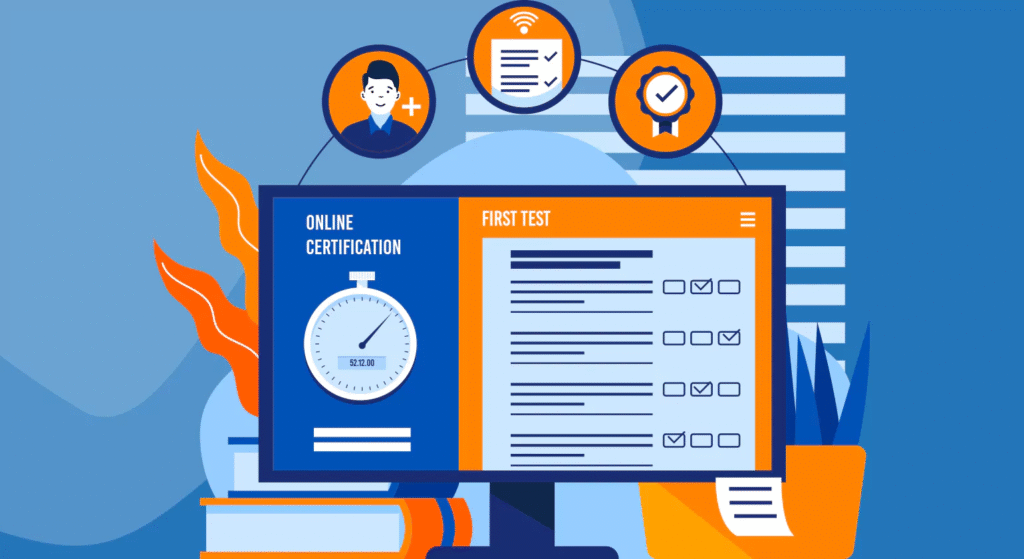The term “OWP Mainframe” refers to a sophisticated, centralized computing system designed to manage and streamline transportation operations. These systems are integral to logistics and supply chain management, providing real-time data processing, enhanced security, and efficient resource allocation.
In today’s fast-paced global economy, transportation companies require robust systems to handle complex operations. The OWP Mainframe serves as the backbone for such enterprises, ensuring seamless coordination across various departments and geographies. Whether dealing with scheduling, cargo tracking, vehicle maintenance, or compliance, the OWP Mainframe offers a unified approach that simplifies processes and boosts productivity.
The Vision Behind OWP Mainframe
The driving vision of the OWP Mainframe system is to be the safest, most customer-focused, and successful transportation company in the world. This vision emphasizes:

Rebecca Lynn Murray Official
- Safety: Implementing stringent protocols to ensure the well-being of goods, personnel, and infrastructure.
- Customer Focus: Tailoring services to meet individual client needs and enhancing user experience with transparency and reliability.
- Success: Achieving operational excellence and financial profitability through strategic innovation and technology.
By adhering to this vision, the OWP Mainframe aims to set industry benchmarks and foster long-term trust among all stakeholders.
Key Features of OWP Mainframe
Centralized Data Management
The OWP Mainframe consolidates data from multiple departments into one unified system. This centralization improves data accuracy, speeds up decision-making, and facilitates reporting and auditing. From inventory control to route planning, all information is accessible through one secure interface.
Also Read:Coomersu: The Future of Community-Centric Commerce and Trusted Product Discovery
Real-Time Tracking and Monitoring
With built-in GPS and IoT integration, the system enables real-time tracking of shipments, vehicles, and equipment. Managers can monitor operations continuously, address delays promptly, and offer live updates to clients, creating a more transparent and efficient process.
Automated Workflow Processes
Routine tasks such as vehicle dispatch, scheduling, invoice generation, and document management are automated within the OWP Mainframe. This automation helps reduce manual labor, decrease error rates, and speed up routine processes.
Advanced Security Protocols
The OWP Mainframe uses multi-layered security to protect data. Features include end-to-end encryption, multi-factor authentication, and strict user access control policies. This ensures sensitive logistics information remains secure from unauthorized access or cyberattacks.
Scalability and Flexibility
As businesses grow, the OWP Mainframe scales effortlessly. Its modular design allows companies to add new functionalities as needed, making it ideal for both small logistics providers and multinational transportation corporations.
Components of the OWP Mainframe System
Transportation Management Module
Handles all aspects of shipping, fleet scheduling, cargo tracking, and route optimization. This module helps reduce costs by optimizing delivery paths and reducing empty runs.
Inventory and Warehouse Control
Monitors stock levels, manages warehouse space, and automates reordering processes. It ensures that inventory is stored efficiently and fulfills demand without excess stockpiling.
Also Read:Hannahoetzel2: A Deep Dive into Digital Autoethnography and Cultural Reflection
Compliance and Documentation
Generates required paperwork for domestic and international logistics, including customs documentation, safety certifications, and tax compliance forms. Automated document creation ensures that companies always meet legal and regulatory requirements.
Communication Interface
Offers internal messaging and alert systems to keep team members informed in real time. Alerts can include weather conditions, route changes, or urgent service requests.
Analytics and Business Intelligence
The OWP Mainframe compiles large volumes of data and presents actionable insights through visual dashboards. Managers can identify patterns, predict demand, and make strategic decisions based on real-time metrics.
Benefits of Implementing OWP Mainframe
Enhanced Operational Efficiency
By streamlining workflows and integrating data, the OWP Mainframe reduces redundancies and accelerates operations. Efficiency gains are evident in faster loading times, better asset utilization, and reduced paperwork.
Also Read:Vertėjjas: The True Bridge Between Languages and Cultures
Improved Customer Satisfaction
Accurate delivery estimates, real-time tracking, and consistent service enhance the customer experience. Happy customers are more likely to remain loyal and refer new clients.
Cost Reduction
Lower operational costs are a major benefit. The system reduces fuel costs through optimized routes, cuts labor costs via automation, and minimizes maintenance expenses with proactive alerts.
Greater Transparency
All actions are logged within the system, making it easier to audit, trace shipments, and investigate delays. Transparency fosters better client relationships and internal accountability.
Regulatory Compliance
The OWP Mainframe helps organizations stay compliant with transportation laws, environmental guidelines, and labor regulations by automating documentation and monitoring key performance indicators.
Environmental Sustainability
By reducing unnecessary vehicle movements, the system helps lower emissions. Integration with electric and hybrid vehicle tracking supports sustainable transport initiatives.
How OWP Mainframe Works
The OWP Mainframe operates by collecting data from various sources such as sensors, GPS devices, barcodes, and human inputs. This data is processed through a series of algorithms that handle:
- Real-time decision-making (e.g., rerouting trucks during traffic)
- Scheduling (e.g., dispatching vehicles to high-priority tasks)
- Data storage and retrieval (e.g., keeping records of past deliveries)
All users access the system via a secure interface, with dashboards tailored to their roles and permissions.
Also Read:Bıql: What It Is, Why It Matters, and How You Can Use It Today
User Roles and Access Control
To ensure security and operational clarity, the OWP Mainframe assigns roles to its users:
- Administrator: Full control over the system, including user management and configuration settings.
- Logistics Manager: Access to scheduling, fleet tracking, and performance analytics.
- Warehouse Staff: Permission to manage inventory, load/unload schedules, and storage optimization.
- Customer Service: Access to client records, shipment statuses, and order processing.
- Client/Viewer: Read-only access to monitor their shipments and receive updates.
This tiered access ensures users only interact with the features relevant to their job functions.
Implementation Strategy for OWP Mainframe
Step 1: Business Needs Assessment
Understand the current challenges and requirements. Conduct interviews, surveys, and workshops with stakeholders to identify pain points and opportunities.
Step 2: System Customization
Customize the OWP Mainframe modules to align with existing workflows. This may include integrating third-party applications and reconfiguring current databases.
Step 3: Training Programs
Develop comprehensive training for all staff, from upper management to warehouse operators. Ensure everyone understands their role within the system.
Step 4: Pilot Program
Deploy the system in a small, controlled environment to evaluate its performance. Collect feedback and make necessary adjustments.
Step 5: Full Deployment
Roll out the system company-wide. Ensure 24/7 support during the initial launch phase and monitor system health regularly.
Challenges and Solutions
Data Migration
Challenge: Migrating from outdated systems without losing critical data. Solution: Employ data specialists to audit, clean, and convert old data formats securely.

User Resistance
Challenge: Some staff may resist using new technologies. Solution: Provide ongoing training and demonstrate how the system makes their jobs easier.
Integration with Legacy Systems
Challenge: Older software might not be compatible with the new mainframe. Solution: Use middleware or APIs to bridge compatibility gaps.
Cybersecurity Threats
Challenge: Risk of data breaches. Solution: Regularly update software, use firewalls, and implement strict password policies.
Future Trends in Transportation Technology
Artificial Intelligence (AI)
AI-powered tools will enhance the OWP Mainframe’s ability to forecast demand, detect anomalies, and optimize routes automatically.
Blockchain for Transparency
Blockchain will allow secure, tamper-proof records of all logistics transactions, enhancing trust across the supply chain.
Also Read:Kennedy Funding Ripoff Report: A Deep Dive into Allegations and Reality
Autonomous and Electric Vehicles
The mainframe will integrate with self-driving vehicles to coordinate deliveries with minimal human intervention, reducing costs and environmental impact.
Digital Twins
Digital twins create real-time simulations of transportation networks. The OWP Mainframe can use them to predict outcomes and test new strategies.
Hyper-Automation
Hyper-automation combines AI, machine learning, and robotic process automation (RPA) to automate even complex decision-making processes within the logistics chain.
Global Relevance of OWP Mainframe
The OWP Mainframe isn’t limited to a specific region. Its capabilities support:
- Multinational logistics operations
- Cross-border customs compliance
- Multilingual interfaces and documentation
- International warehouse synchronization
With features designed for scalability and localization, the OWP Mainframe serves as an ideal solution for global transportation challenges.
Real-World Applications
Example 1: E-commerce Giant
A leading e-commerce company uses OWP Mainframe to handle over 500,000 packages daily. The system automates delivery schedules and provides live tracking for millions of customers.
Example 2: Freight and Rail Transport
A railway cargo company integrates OWP Mainframe with onboard sensors to monitor train speeds, cargo status, and maintenance alerts. This reduces delays and enhances safety.
Example 3: Urban Delivery Services
Urban delivery companies use the system to map out low-emission zones, prioritize eco-friendly routes, and dynamically allocate couriers based on package volume and urgency.
FAQs about owp mainframe
What is the main goal of the OWP Mainframe system? The main goal is to streamline and secure transportation management while improving customer service and reducing costs.
Is OWP Mainframe suitable for small businesses? Yes. Its modular design makes it scalable, so even small logistics providers can benefit.
What industries use OWP Mainframe? Industries include retail, manufacturing, e-commerce, automotive, food distribution, and public transportation.
How long does it take to implement the system? Depending on company size, implementation may take from a few weeks to several months.
What kind of support is available? Most vendors provide 24/7 customer support, along with training, onboarding assistance, and regular updates.
Can the system be accessed remotely? Yes. OWP Mainframe supports mobile and cloud access, enabling users to monitor and control logistics operations from anywhere.
Conclusion
The OWP Mainframe is more than a software solution—it’s a technological partner for any organization seeking to improve transportation and logistics operations. Its capabilities span automation, tracking, compliance, customer service, and strategic decision-making. With growing global demand for fast, safe, and efficient delivery, adopting systems like the OWP Mainframe is no longer optional—it’s essential for long-term success.
